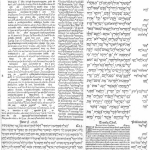A reader writes:
As was announced yesterday, two scientists have won the Nobel Prize for their work in reversing matured cells from their differentiated state to an embryonic-like state, creating what are known as “induced pluripotent stem cells.” 100% ethical! A recap is here: Also, unlike embryonic stem cells which have still never cured any diseases, one of the good doctors’ discoveries is going to be put to the test next year in an attempt to reverse blindness.
Since I know you have been reporting on this for years, I figured your other readers might like to know too. I have a lot of hope that our scientific community will be moving away from the destruction of embryos for raw materials (despite, of course, the usual tired protestation that, despite the evidence, everyone just KNOWS that embryonic stem cells are the MOST powerful.)
I’m puzzled by this story. I *hope* it’s good news and given Wesley Smith’s sterling record of reportage I assume it is, but I would really like somebody to explain to me the difference between embryonic stem cells and “embryonic-like” cells. I gather this does not involve the creation of embryos and therefore the destruction of innocent human life. But what *is* being created here? Any bio-geeks out there? Help me, Bio-Wan Kenobi. You’re my only hope!
UPDATE: Thanks to the invaluable Rebecca Taylor at Mary Meets Dolly I have my answer:
Pluripotent cells are ones that can become most or all of the 200 cell types of the body, but they cannot become other tissues like placenta. So pluripotent cells, alone without further manipulation, cannot implant and grow into a fetus, baby etc. Before Dr. Yamanaka scientists would get pluripotent stem cells from the inner stem cell mass of an embryo. Dr. Yamanaka, realizing that we cannot continue to destroy embryos for stem cells, envisioned a way to reprogram an adult cell back to a pluripotent (hence the embryonic-like) state. Now scientists can take a skin cell, reprogram it back to pluripotency and then grow lung tissue, neurons, or other tissue they want to study. Induced pluripotent stem cells are the perfect alternative to cloning because you get stem cells that are a genetic match to a patient, but without creating and destroying a cloned human embryo. There is some concern that scientists have been able to grow a mouse from just these induced pluripotent stem cells (iPSCs) suggesting that induced pluripotent stem cells are just like cloning. But looking closer you find that the scientists had to manipulate some of the iPCs so that they can become the extra-embryo tissues like placenta. So while cloning creates a complete human embryo capable, atleast some percentage of the time, of implanting in a uterus and continuing to grow, reprogramming adult cells back to pluripotency only creates stem cells, not a complete organism. This is why iPSC are being hailed as a major ethical breakthough in stem cell science.
Thanks be to God for you guys being such smart readers! Good news indeed!











